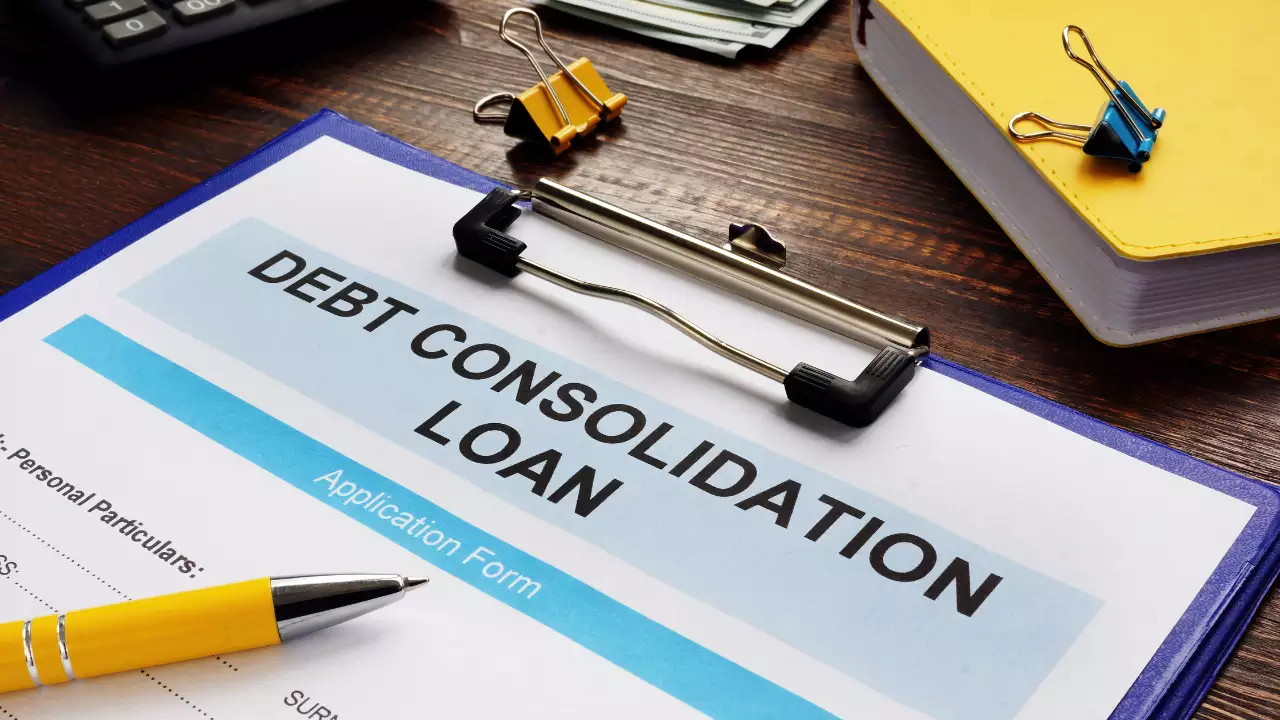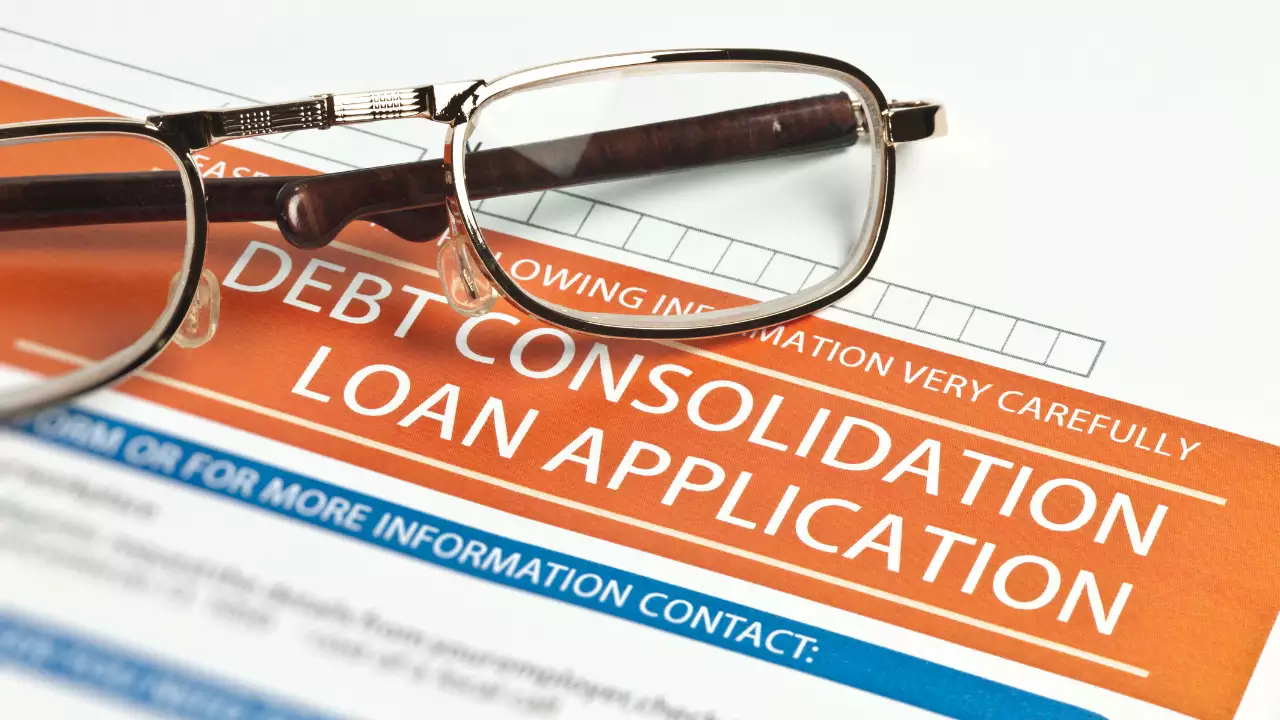Debt consolidation is the process of combining multiple debts into one new consolidated debt, typically with lower interest rates and monthly payments. Consolidating debts with a personal loan or balance transfer credit card can help pay off debt faster and simplify finances. However, debt consolidation alone won’t fix underlying overspending habits.
What is Debt Consolidation?
Definition
Debt consolidation simply refers to taking out one new loan to pay off multiple other debts. This consolidated loan ideally has a lower interest rate, allowing you to save money each month and pay off debt faster. The goal is to simplify debt repayment by having only one monthly payment instead of many.
Common ways to consolidate debt include:
- Debt consolidation loans: Unsecured personal loans used specifically to consolidate other unsecured debts like credit cards, medical bills, etc. These typically have fixed interest rates and terms of 2-5 years.
- Balance transfer credit cards: Transferring multiple credit card balances onto a new card with a 0% introductory APR for a set period, usually 6-21 months.
- Refinancing loans: Taking out one new loan at a lower rate to repay and consolidate an existing loan, like refinancing student loans or mortgages.
Methods

The best debt consolidation method for you depends on your specific financial situation. Those with very good credit scores (690+) and steady incomes are the best candidates for debt consolidation loans and balance transfer cards.
Refinancing is an option when you already have an existing loan, like a mortgage, auto loan, or student loan. Refinancing consolidates debts by replacing old loans with a new single loan at better terms. This includes lower interest rates, lower monthly payments, or both.
Pros and Cons of Debt Consolidation
Debt consolidation offers some nice perks if done correctly, but also comes with risks to consider.
Pros
- Lower interest rates: The major benefit of consolidating debt is getting a much lower interest rate, reducing the total interest paid over time. For example, consolidating credit card debt with a personal loan at 6% interest instead of 22% interest saves significant money.
- Lower monthly payments: Even if the total repayment period stays the same, reducing interest rates also lowers minimum monthly payments. This frees up room in your budget.
- One single payment: Instead of tracking multiple student loan, credit card, and other payments each month, you make one payment to one lender. This simplifies the repayment process.
- Pay off debt faster: Getting lower rates ultimately means you can pay off consolidated debt much faster and save money overall. Paying less interest over time applies more payment to the principal debt.
- Improve credit score: Responsibly managing and paying down consolidated debt each month builds your credit history and score over time.
Cons
- Credit inquiries hurt score temporarily: Applying for a consolidation loan or balance transfer card requires a hard credit check, which can lower your score in the short-term. Too many checks over a short period look risky.
- Consolidation fees: Balance transfer cards often charge an upfront fee of 3-5% to transfer balances. Personal loans also charge origination fees. Factor these costs in before consolidating.
- Temptation to overspend again: Consolidating existing debts won’t fix bad spending habits that led to debt in the first place. Without discipline, it’s easy to rack up new credit card balances and get back into debt.
- Doesn’t fix underlying problems: While consolidation saves money on interest and makes repayment easier, it doesn’t address root overspending problems. You may need credit counseling or financial advice to change behavior.
Who Should Consider Debt Consolidation?

If you meet certain criteria, debt consolidation can be a smart financial move:
- Have good credit score: Good credit (690+ score) qualifies you for the best consolidation loans and balance transfer card offers. Average credit scores may also qualify but have higher rates.
- Have steady income to afford payments: Lenders want to see reliable income that covers existing debts plus the new consolidated debt payment each month. Steady income is key to approval and responsible repayment.
- Want to pay off debt faster: The lower interest rates achieved via consolidation mean you can pay off the principal debt much faster and save money over time, a great option if debt repayment is a priority for you.
- Struggling with high interest rates: If you have credit card, medical, or other high interest rate debt making balances difficult to pay down, consolidation can provide much needed interest savings.
- Have multiple payments to juggle: When you have 5+ different debts with payment due dates spread throughout the month, consolidation greatly simplifies things with just one monthly payment.
Debt Consolidation Process Step-by-Step
Here is a short table of the steps:
| Step | Description |
|---|---|
| 1. Review debts and choose consolidation method | Pull credit reports, list all debts owed, research consolidation options, and decide which method best suits your financial needs |
| 2. Check credit score and history | Check credit score and history before applying to estimate interest rates you may qualify for |
| 3. Research lenders and apply | Compare lenders for the best rates, fees, and terms and submit a consolidation loan application |
| 4. Get approved and receive loan amount | Review loan agreement details like amount, rate, term length. Sign agreement to consolidate debts |
| 5. Pay off multiple debts | Creditor applies payment to repay debts fully and close accounts |
| 6. Begin making single monthly payment | Only responsible for one payment to new consolidation loan creditor each month |
If you decide debt consolidation is right for your situation, here is an overview of the typical process:
1. Review debts and choose consolidation method

Pull your credit reports and make a list of all debts, interest rates, monthly payments, and balances owed. Then research your consolidation options like balance transfer cards, personal loans, refinancing, etc and decide which method best suits your needs and financial goals.
2. Check credit score and history
It’s important to check your credit score and history before applying for any new credit product or loan. This gives you an idea of what interest rates you may qualify for based on your score.
You can get free credit reports from AnnualCreditReport.com and access credit scores from many personal finance sites.
3. Research lenders and apply for new consolidated loan
For personal loans and refinancing, research multiple lenders like banks, credit unions, and online lenders to compare interest rates and fees. Get prequalified if possible. Submit a consolidation loan application with the lender offering the best terms you qualify for.
For balance transfer credit cards, find cards offering 0% intro APRs on transferred balances for 6+ months. Compare balance transfer fees too. Apply for the card with the longest 0% term and lowest fee.
4. Get approved and receive loan amount
If approved, you will receive a loan agreement outlining the consolidation loan amount, interest rate, fees, monthly payment, and repayment term length. Review the agreement first before signing to consolidate your debts.
5. Pay off multiple debts with new consolidated loan
Once you accept the loan agreement, the lender issues payment either directly to your creditors and accounts or gives you the loan amount. Call each creditor to make sure they apply loan payments properly to repay debts in full and close accounts.
6. Begin making single monthly payment on consolidated loan
You are now only responsible for making one monthly principal and interest payment to the new consolidation loan creditor or card issuer. Make payments on time each month to pay off your balance faster and avoid late fees.
Alternatives to Debt Consolidation

While debt consolidation is a good option for some, it doesn’t work for everyone’s unique financial situation. Alternatives to consider include:
- Balance transfer credit cards: If you have good credit, you may still benefit from doing a simple balance transfer to a card with 0% intro APR instead of debt consolidation loan. This pays off credit card balances without needing to apply for a separate loan.
- Debt management plan: Credit counseling agencies can negotiate with creditors on your behalf to lower interest rates and create a structured DMP to pay off debt through monthly deposits to the agency.
- Debt settlement: Debt settlement companies negotiate to get creditors to agree to letting you pay a smaller lump sum (often 30-50% of the balance) as full repayment for credit card and other unsecured debts. This has major credit score implications.
- Bankruptcy: As a last resort if you truly cannot pay back debt, filing for bankruptcy liquidates assets to pay creditors and discharges remaining debts. However, it devastates credit scores for 7-10 years making it challenging to get loans or credit.
Conclusion and Summary
Debt consolidation offers the benefits of saving money on interest, simplifying payments, and paying off debt faster by combining multiple debts into one through a consolidation loan or balance transfer card.
It works best for those with good credit and steady incomes.
While not a magic fix for financial problems, it can be a helpful debt payoff strategy when used responsibly. However, consolidation alone won’t make overspending habits or the root reasons for getting into debt disappear.
To fully get back on solid financial ground, take a holistic look at your budget, expenses, and any unhealthy money management behaviors that lead to debt through bad spending habits or lack of savings.
Getting professional help through credit counseling or financial advising services can also help analyze your situation and provide customized money and debt advice.
In tandem with other good financial habits – budgeting each month, building emergency savings, putting a spending plan in place, etc. – debt consolidation can be a smart strategy on the journey back to being debt free.